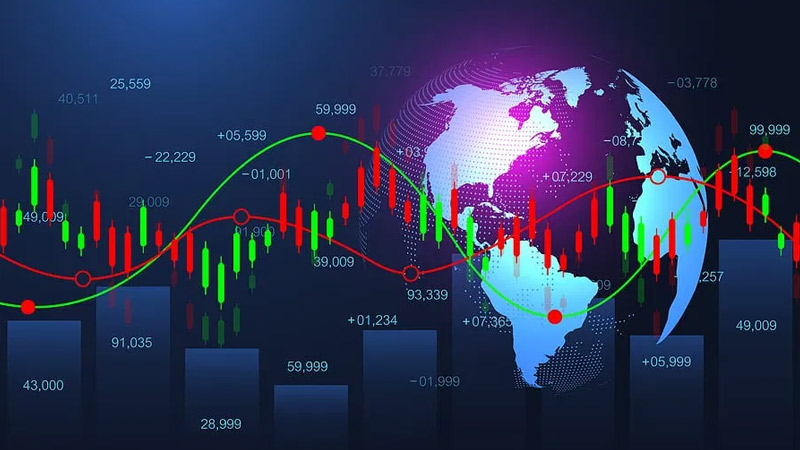
The burgeoning domain of Decentralized Finance (DeFi) is rapidly evolving, and the proposal of a federal digital currency presents an intriguing meeting point. This {potential{ synergy could disrupt traditional financial systems by leveraging the transparency of blockchain technology. A federal digital currency could enhance financial inclusion, accelerate transactions, and cultivate individual autonomy over funds. However, challenges such as data security must be addressed to ensure a successful and beneficial integration of DeFi with a federal digital currency.
- Additionally, the effect on traditional banks requires careful consideration.
- Therefore, the direction of DeFi in conjunction with a federal digital currency remains open-ended, presenting both challenges for innovation and evolution within the global financial system.
ZAR versus AVAX
copyright investors exploring diverse opportunities are continuously analyzing different blockchain platforms. Two prominent choices in this landscape are the South African Rand (ZAR) and Avalanche (AVAX). While both possess unique strengths, understanding their key characteristics is crucial for making informed investment decisions. ZAR, a fiat currency, offers stability, but its integration with blockchain technology remains restricted. In contrast, AVAX, a decentralized blockchain platform, provides speed and supports a expanding ecosystem of decentralized applications (copyright).
- Considerations such as transaction fees, network security, and developer adoption play a vital role in this comparative analysis.
Ultimately, the most appropriate choice between ZAR and AVAX depends on an investor's personalized needs and risk tolerance.
Avax Price Prediction 2030: Navigating the Future of Decentralized Finance
The future of decentralized finance (DeFi) is full of potential, with Avalanche (AVAX) emerging as a prominent contender. As we look ahead to 2030, visionaries are offering to estimate the trajectory of AVAX's price.
Several of factors will shape the trajectory of AVAX in the coming years, including: the growth of the DeFi ecosystem, regulatory developments, technological breakthroughs, and overall market sentiment.
Positive forecasts suggest that AVAX could surge in value, potentially reaching new all-time highs as DeFi adoption accelerates. On the other hand, cautious analysts caution that regulatory hurdles and market volatility could stifle AVAX's growth.
Ultimately, predicting the price of any copyright in 2030 is a complex task. The success of AVAX will hinge on its ability to evolve to the changing landscape of DeFi and capture the trust of users and investors.
Bitcoin's Meteoric Ascent
Stepping back in time to 2012, we find a period marked by rapid growth and unprecedented price movements. Pioneering investors witnessed Bitcoin's value skyrocket to new heights, capturing the attention of both enthusiasts and skeptics. The driving forces behind this explosion were a mix of factors, including expanding acceptance among businesses, novel technological developments, and the potential of a independent financial structure.
A Journey Through Digital Currency: From ZAR to Bitcoin and More
Digital currencies have undergone a dynamic evolution since their first beginnings. Early experiments like the Electronic Cash system in the late 1980s paved the way for later innovations. One of the earliest modern digital currencies was ZAR, a electronic payment system developed in the early 1990s. ZAR, however, was restricted in its scope and adoption.
The emergence of Bitcoin in 2009 marked a revolution in the world of digital currencies. Its decentralized nature and cryptographic protection resonated with many, leading to its widespread recognition. Bitcoin's success spurred a boom in the development of other cryptocurrencies, each with its own individual features and purposes.
From Ethereum's smart contract capabilities to Litecoin's focus on faster transaction apple share price speeds, the digital currency landscape has become incredibly multifaceted. This constant development shows no signs of slowing down, with new projects and applications emerging frequently. The future of digital currencies holds immense potential, promising to transform various sectors from finance to governance.
Blockchain Breakthroughs: Exploring the Impact of Federal Digital Currencies on Financial Systems
The emergence of federal digital currencies (FDCs) is poised to fundamentally reshape the global financial landscape. Such cryptocurrencies, issued and regulated by central banks, hold the potential to revolutionize traditional banking systems, enhancing transactions and mitigating financial risks.
The implications regarding FDCs are vast and multifaceted. Firstly, they could facilitate greater financial inclusion by offering access to banking services in underserved communities. Secondly, the transparency inherent in blockchain technology could enhance regulatory oversight and combat illicit financial activities. Thirdly, FDCs could potentially to boost economic growth by lowering transaction costs and streamlining cross-border payments.
- However, the integration of FDCs also presents several challenges. Government officials must carefully consider the potential impact on monetary policy, privacy, and cybersecurity.
- Moreover, the success of FDCs will depend public trust and adoption.
- Public education will be vital in mitigating concerns and fostering widespread acceptance of this novel technology.
Ultimately, the effect of FDCs on financial systems remains to be determined. Yet, their possibility to transform the way we manage finances is undeniable. As this development continues to evolve, it will be fascinating to observe its advancement and its' lasting impact on the global economy.
Advised addresses:
www.wsj.com